Do you ever want to get out on the hiking trails but have no one to go with, your friends back out or they just aren’t the outdoorsy kind of people? Or maybe you just want to get out on your own, but fear is keeping you back?
Don’t worry, you’re in the right place.
There are so many benefits of hiking alone and when you first get over that first solo hike, you’ll never want to stop. I’ve been hiking solo for years. Often I hike with my dog, Ayla, but she can’t always come with me.
To help you get over your fears of solo hiking, I’ve put together my top solo hiking tips for you to confidently hit those trails without relying on others.
If you’re new to hiking or not, it can feel safe to start with easy and highly-frequented hikes until you get more confident. Read on for more tips on hiking solo.
Disclosure: This post may contain affiliate links. That means that if you make a purchase through one of those links, I will get a small commission at no extra cost to you. As an Amazon Associate, I earn from qualifying purchases.

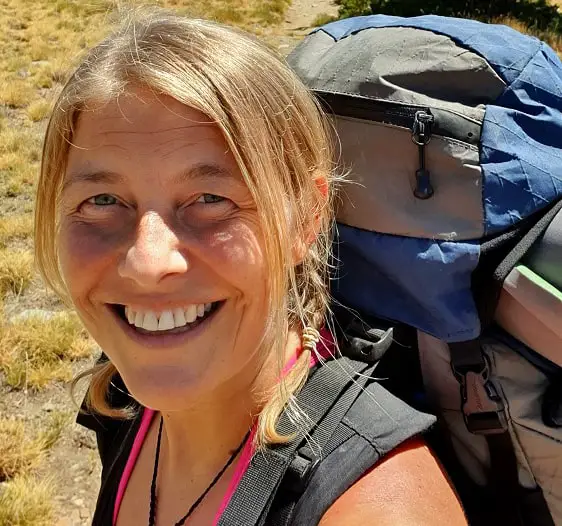
I’m Linn Haglund, the face behind Andalucia Hiking. I’m an avid hiker and after calling Andalucia home for over 10 years, I’ve covered my share of peaks, ravines, rivers, and valleys across all 8 provinces. I’m here to help you navigate this incredible region with thorough hiking guides, hiking tips, and gear recommendations.
Table of Contents
Benefits of hiking alone
Before we dive into the solo hiking tips, let’s talk about what a lot of people are worried about before setting off alone. I often get questions like; Is it safe to hike alone? Don’t you get bored hiking alone?
On top of that, I also get comments like you’re so brave hiking by yourself or I could never have gone hiking solo. And my favorite: Aren’t you scared?
Short answer, no I’m not scared and it’s the most rewarding experience I can imagine to hike solo.
Now, there are a lot of benefits of hiking alone and I’ll let you in on some of them here.
- You can go hiking exactly where and when you want – this is my favorite reason for hiking alone! While I love hanging out with friends and sharing the memories, the freedom that solo hiking gives me is invaluable.
- You get stronger mentally – whenever you’re in front of a challenge, you need to rely on your own decisions, whether it’s to turn around or to get past a barrier. You get more independent and your problem-solving skills improve.
- You learn a lot about yourself – you’ll learn about your own limits and you might surprise yourself in many ways as you might endure a lot more than what you expected. But you’ll also get time with your thoughts which is something there isn’t much time for in our day-to-day these days.
- You’ll be completely present – being present is also something quite rare in our busy lives where work, social media, friends, kids, dogs, family, traffic, news, and did I mention social media soak up all our energy. When hiking with friends, you’ll be distracted talking. When hiking alone, on the other hand, you’ll be 100% present. This is powerful!
- You’ll be more open to meeting other hikers – while you might just want to wander around in your own thoughts, you might also be more open to chatting with other hikers. I can’t even count how many amazing people I’ve met while solo hiking and how many awesome stories I’ve heard and not to mention tips for new trails! I get excited just thinking about it!
- Take as many pictures as you want – this is a classic for me. I take a lot of pictures whenever I’m traveling or hiking. When I hike alone, I don’t feel any guilt over friends that have to wait or stress about running after them because they just left me behind. If you’re just a little bit like me, you’ll love going on a solo hiking trip, it’s a completely different experience as you get to take all the pictures you want and your friends won’t walk awkwardly in the middle of them because they’re tired of waiting.

MY PICKS FOR SOLO HIKING GEAR
- Osprey Sirrus 24 pack for day hikes
- Se other backpacks here
- Hiker Hunger trekking poles
- Vegan hiking socks
- Knee brace for hiking
Solo hiking tips
Tell someone where you go
One of the most important solo hiking tips is to always tell someone where you go and when you expect to be back. This way, you can feel safe that someone will be looking for you if you’re not back in time.
Personally, I only do this if I’m heading out on a hike where I know there are sketchy parts along a route that isn’t much frequented by hikers. Later, I check in with a text message once I’m back on safe ground so my friend can stop worrying (because they do even though they say they don’t.)
This is particularly important if you go on less crowded hikes or hikes with steep or technical sections. But even on trails that can be hard to follow, as it’s easier to get lost – though I don’t recommend you head out on such hikes alone unless you’re a seasoned hiker.
If you know up front that there’s bad or no phone reception, you should also let people know so they don’t stress out if you don’t reply to their messages.
As an example, I always turn the internet and anything else that can consume battery from my phone off when I’m hiking. If I need to send a message or want to update my Instagram story during the hike, I’ll just turn it on for that and then off again.
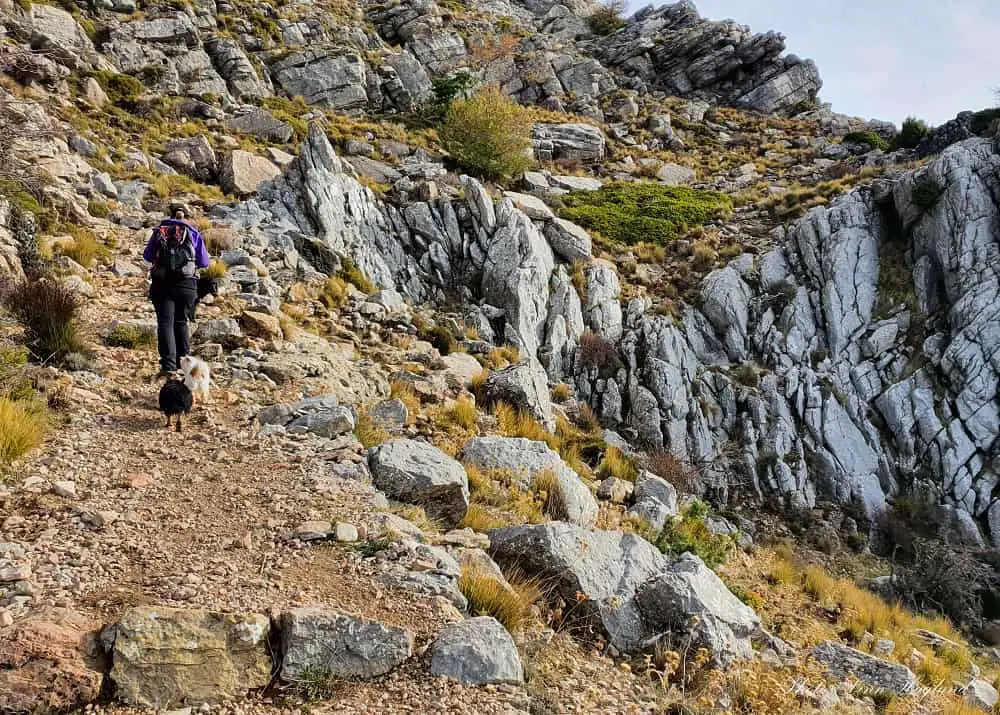
Familiarize yourself with the route
Familiarizing yourself with the route before the hike is always important, but especially when hiking solo. It makes your life so much easier as you don’t have to worry about getting lost. Even though, of experience, I’d say it happens anyway on certain routes.
That’s why it’s so important to make note of particular landmarks or waypoints along the route so that you know you’re on the right track. And when you realize you’re not, it’s easier to find back to it.
Since there could be no internet connection on the trail, you should either download the map or take a screenshot of it so you know what the route looks like. Take screenshots or print out route descriptions too, so that you have them in case you need them.
It’s good to know more or less how long time it takes to do the hike too, so you have an idea of how long time you’ve got left.
Start with highly frequented hikes
To start out as a solo hiker, it’s a good idea to begin with treks that are highly frequented by other hikers. This makes it easy to ask about the way if you get unsure. I like to ask how long time it’s left to the peak, waterfall, etc. to get an idea of what’s left.
If you do that, though, be aware that every person hikes at a different pace and people have different perceptions of time. So it’s always smart to ask more than one person how long it’s left (you’re likely to get very different answers) and compare the answers to the information about the route that you already have.
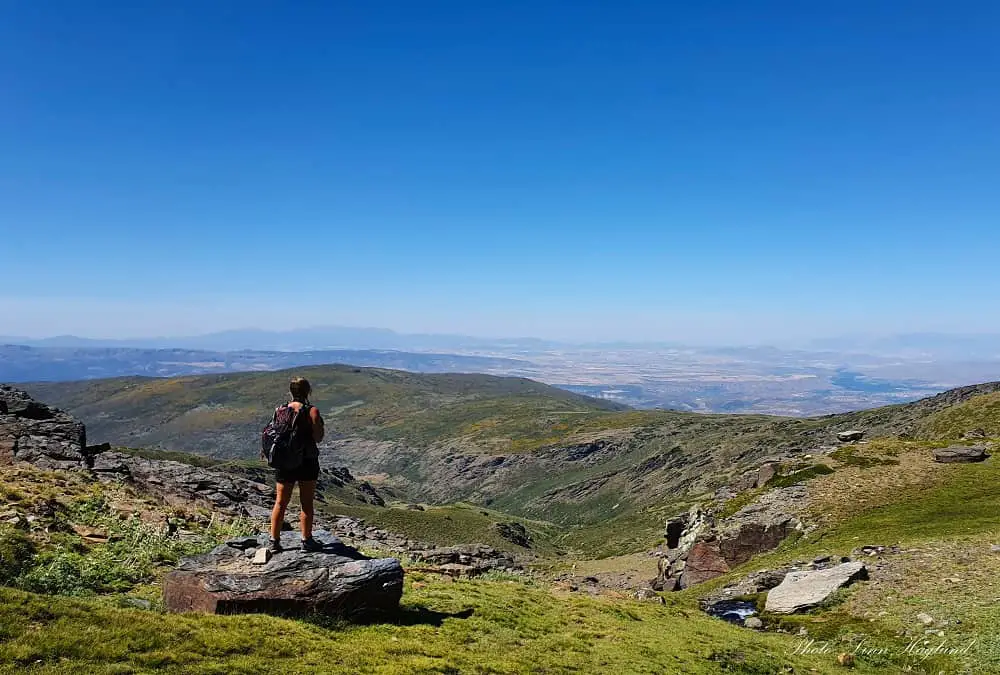
Get inspired with these hiking quotes
Bring enough food and water
I can’t say this enough, even as a seasoned hiker, it’s easy to underestimate the need for water and food on a hike. Especially when hiking on a hot day! Bring more water than you think you’ll need.
It’s better to carry the rest with you back than getting halfway through realizing that you have to turn around because you’re running out of water.
A water bladder is a great hiking accessory to bring on a hike. You get them in 3 liters and as they sit up against your back, the weight is easy and comfortable to carry compared to water bottles.
If you want to play it safe, bring a water purifier as well so you can fill up with water on the way in the unfortunate case you run out of water. I usually carry with me a SteriPen as it’s lightweight and doesn’t take up much space.
Extra energizing snacks like nuts, dates, and energy bars are also good to have a little extra of, in case of emergency.
Bring enough layers of clothes
Obviously, it’s always important to bring enough layers of clothes so you’re prepared for changes in the weather conditions. But hiking solo means you can’t just borrow a jacket from your friend when you get cold.
Also, in extreme situations (which shouldn’t happen at all,) say you do get lost and end up having to stay the night outside, it’s better to be prepared than not to. An emergency blanket weighs nothing and takes up minimal space in your backpack.
I’m an expert in starting my hikes late in the morning, which means I often get back after dark (I’ll get to the headlamp too!) This means it’s usually chillier in the air by the time I get back, and gloves, neck gaiter, beanie, windbreaker, and a pair of hiking pants (If I started off with shorts,) all come in handy.
I’ll slide elegantly over to the next tip for solo hikers now…
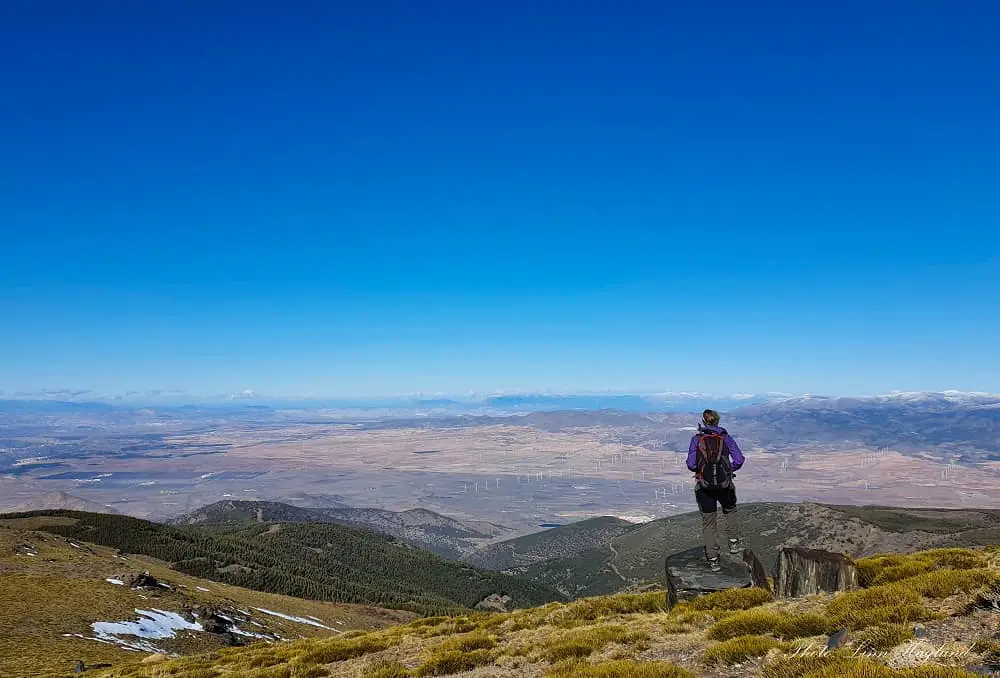
Carry an emergency kit
Because you never know what might happen. If you’re hiking alone on highly frequented trails, there’s always a big chance you get help from fellow hikers who might have an emergency kit, but you should always bring the basics anyway.
Maybe a fellow hiker gets hurt on the trail or needs help with anything and you can help out. You never know.
The main things I recommend bringing are:
- Emergency blanket
- First aid kit
- Multitool knife
- Headlamp
- Blister plasters
- Energy bars (yes, they’re highly necessary for “I’m hungry and out of food emergencies!”)
Bring a portable charger
The last thing you want to happen when solo hiking is to run out of battery on your mobile phone. Even if there’s no coverage, you might be following or recording the route which means your phone becomes your security to find your way back.
There are many types of portable chargers and I do recommend a lightweight. On the other hand, a solar charger comes in very handy, especially on multi-day hikes. The backside with these is that they tend to weigh a fair bit. Another option is to bring two lightweight ones for security.
I love this solar panel portable charger as it charges my phone at least 4-5 times. Make sure you charge it with electricity before you head out so it’s fully charged.
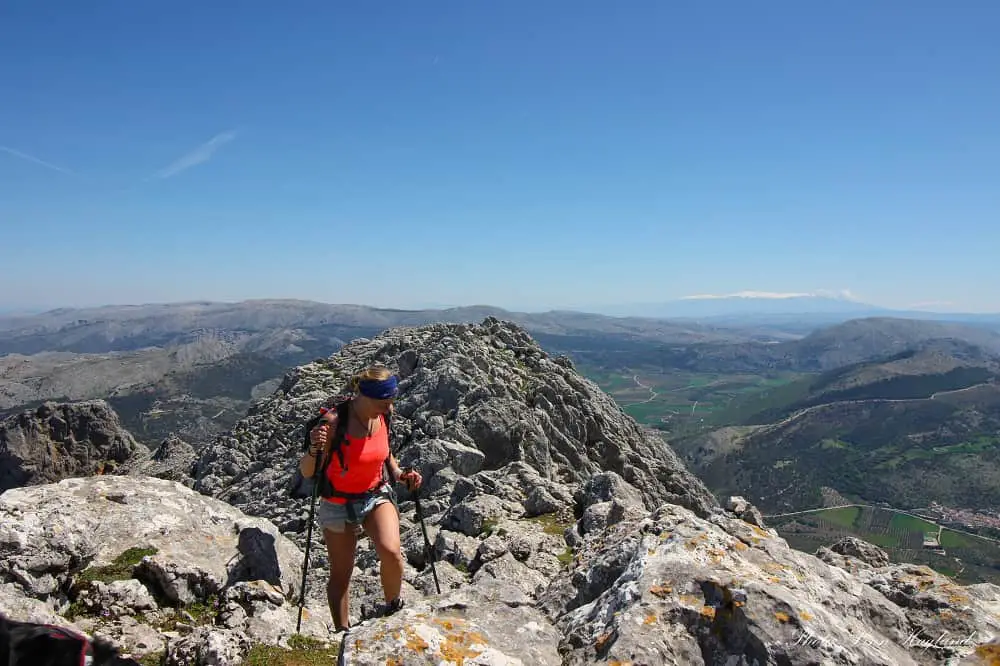
Keep track of time
Make sure you keep track of time so you don’t have to walk back in the dark. Even though you bring a headlamp, it’s not ideal to use it when hiking solo.
I’m probably not the one to say too much about this, because I quite often end up walking back in the dark. On routes you’re familiar with, it’s always easier than on hikes you’re not so familiar with.
Even on a linear hike where you return the same way you came from, I’ll tell you nothing looks the same in the dark, and that small turn might be hard to spot.
There have been a couple of times I’ve been slightly worried alone in the dark about actually taking the right turn or not. Luckily, it’s always turned out well, but I don’t recommend gambling.
It’s better to start a little extra early when you’re hiking solo than risk walking back in the dark.
Download or record a map on your phone
This is one of the most important solo hiking tips. It’s very comforting to know exactly where you are when you follow or record a map on an app like Alltrails or Wikiloc. I usually take a screenshot of the original map as I like to record my own. This way I can compare them if I get confused about the path.
It’s also excellent for backtracking if I for some reason need to turn around or if the return is the same way. It’s always safe to see on the map where I came from, knowing where my car is.
It also gives the security of knowing more or less how far you’ve got left and how long you have to go to certain landmarks or waypoints.
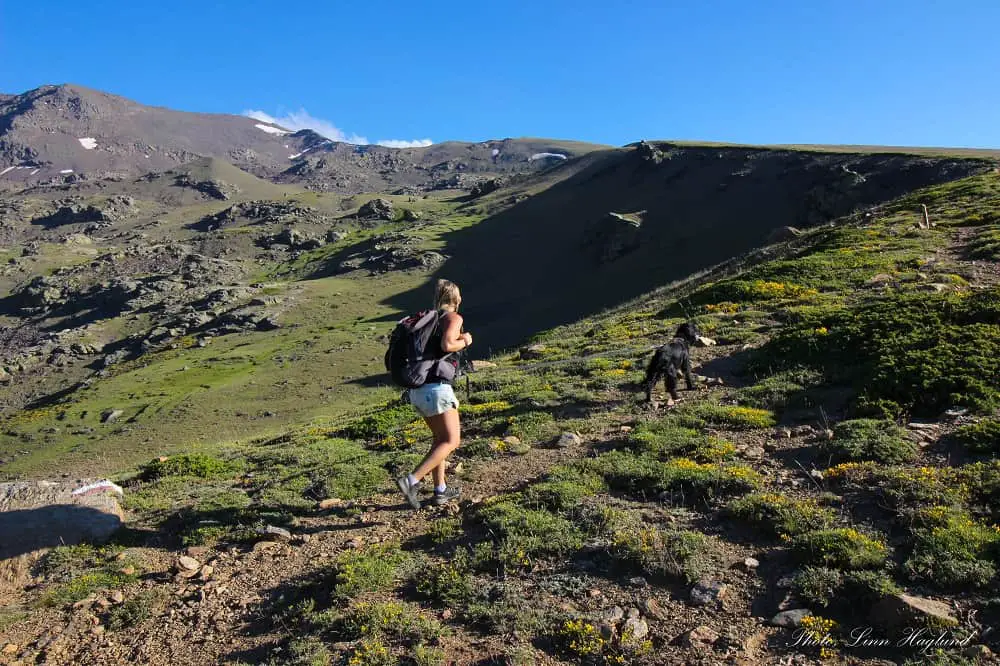
Turn around if needed
If the weather changes, you get to a sketchy part of the trail that you’re not comfortable crossing, or you don’t find the way, it’s always safest to turn around where you came from so that you know the way back.
Also in a situation where you see that you might not get back before dark if you continue, it’s better to turn around than to push on and end up in a sour situation.
I know I’m not the best example for this, as I often hike back in the dark, but I also take several things into consideration when I make the decision on whether to keep going or turn around.
Are there more people on the trail? Is the path well-marked? Do I know the trail and hiking area well? Is there mobile phone reception? There are a lot of things to consider.
I can also say that the more I’ve been hiking alone, the more confident I’ve become on the trails. So a decision I make today, might not have been the decision I would have made 5 years ago or even 2 years ago.
Feel your own boundaries and listen to your gut.
Take pictures of turns and waypoints
Another of the best tips for hiking alone is to always take pictures of turns and waypoints along the way in case you need hints to find your way back.
Remember to look behind you too so you know how it will look when you walk in the opposite direction as if you were walking back. I typically take a picture with my finger pointing in the direction I need to go when I turn back.
Usually, I don’t need these, especially since I record the route on Wikiloc, but sometimes it’s come in handy. And when you hike solo, it’s better to have a few extra pics you didn’t need than regret not taking them when you suddenly need them.

Make yourself familiar with any dangerous animals you could meet
Knowing the locals (aka wildlife) in the area you’re hiking is essential. Are there bears, wild boars, pine processionary caterpillars, snakes, or scorpions?
How do you protect yourself against these animals if you stand face-to-face with them (or accidentally step on the smaller ones?)
Do you need any extra gear like bear spray? Do you need any medication in case you get stung?
Even mosquitos and horse flies can be pretty bad in large numbers, so you might need to cover up and spray yourself down to “survive” your hike.
YOU MIGHT FIND THESE POSTS USEFUL TOO
- Useful hiking gear and gadgets
- Best hiking poles
- How to choose the right knee brace for hikers
- Best vegan hiking socks
- The best sustainable backpacks for day hikes
Reflections on hiking solo
I really hope these tips and tricks gave you enough confidence to head out on your first solo hike. There are so many amazing benefits of hitting the trails so there’s no reason to postpone it any longer.
Imagine walking in a live painting through lush green forests, past rushing cascades, soaking in the fresh scent of trees and flowers melting into nature’s own perfume, and conquering wild peaks where the views take your breath away. Doing this by yourself will strengthen the awareness of your surroundings in a way you never thought possible.
Finally, make sure you’re familiar with the 7 Leave No Trace Principles before you go so that you make a positive impact on the bewildering nature we’re so lucky to have as a playground.
Take the basic considerations mentioned above, and you’re set for one of the most healthy addictions there are!
Happy hiking!
READ NEXT: Expert hiking tips for beginners
Pin it for later!
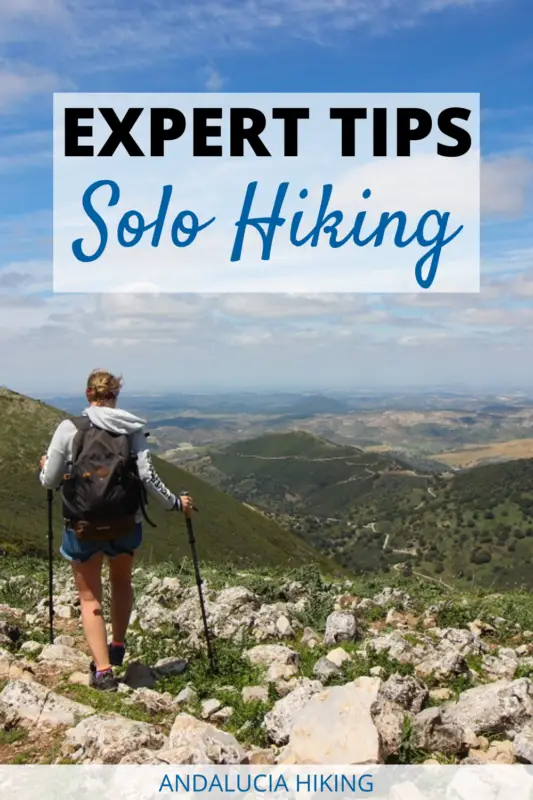


I just wanted to say thank you for providing me with such good info. My wife and I hiked Pico de Veleta and we based our complete trip on your blog. Thank you.
I am so glad I could be of help! I hope you enjoyed Pico Veleta just as much as I did:)